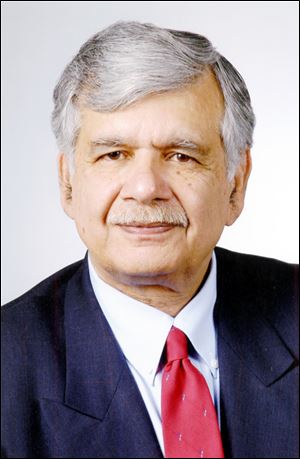
COMMENTARY
Religions can co-exist in harmony
In southern India, groups celebrate faith in their own ways
5/12/2014
Hussain
KOCHIN, India — This intriguing city on the Malabar Coast of Kerala in southwest India is an important point of contact between India and the outside world. Trade winds spawned by monsoons help create these contacts.
India is predominantly a Hindu country, but on the whole, Hindus have not overwhelmed Christians and Muslims. In Kerala, Christians and Muslims constitute 19 percent and 24 percent, respectively, of the 33 million residents.
Jews are a fast dwindling minority in Kerala. They trace their arrival here to the aftermath of the invasion of Jerusalem by Nebuchadnezzar in 587 B.C. In 2001, there were only 51 Jews in Kerala. In Kochin, the oldest synagogue in India has two surviving elderly members.
Christianity reportedly came to Kerala in 52 A.D., when legend says the Apostle Thomas brought Gospels to the Malabar Coast of India. The new converts were called Syrian Christians, or Nasarians.
Many people doubt the legend of Thomas coming to India, but the story is deeply embedded in Christian tradition here. So is the story of his sojourn to China from here and his return to Chennai — formerly Madras — on the eastern coast of India. He was killed in Chennai, where his shrine has attracted millions of devotees.
In a paradoxical twist, Portuguese colonists did not know that Christianity had already reached India. They came to India to establish colonial rule and to convert locals to Christianity.
The explorer Vasco da Gama, on his way to India, must have learned that Gospels had been preached for more than 1,000 years along the west coast of India. When he landed in Calicut, north of Kochin, he mistook a Hindu temple for a Christian church. He entered the temple and prayed to the Hindu deity Kali, thinking he was praying to a statue of Mary.
There is a mosque in the town of Kodungallur, about a 90-minute drive north of Kochin. It was, according to legend, built in 629 A.D., which would put it at the beginning of Islam in the Arabian Peninsula.
According to the story, King Cheraman Perumal of Kerala had a dream in which he saw the moon split in two. His court astrologers could not interpret the dream. Arab traders, traveling from Sri Lanka to the Persian Gulf, told the king about a new prophet in Mecca and a possible link between his dream and the prophet.
The king abdicated his throne and went to Mecca with an entourage. There, he met the Prophet Muhammad and converted to Islam.
On his way back to India, the king died in Oman. But he had sent messages to his successor asking that the returning party be allowed to build a mosque in Kodungallur.
If the story is true, this mosque had to be the first built outside Arabia. Most Muslims in Kerala believe the story. It got an indirect boost in 2005, when then-Indian President A.P.J. Abdul Kalam visited the mosque.
Hinduism is deeply implanted in the soil of India. However, India has, over the millennia, accommodated and adjusted to other religions from within and outside. Today, India boasts a plethora of religions — Jainism, Buddhism, Christianity, Islam, and Sikhism, the latest organized religion.
Tensions are fed by fundamentalist extremists in every religion. These communal flare-ups are mostly economic and political.
However, Kerala and Tamil Nadu, a neighboring state, seem to be exceptions. Religious communities co-exist peacefully. They participate in and celebrate each other’s holidays.
Few other places else would you see places of worship of different religions in as close proximity as in Kerala. The mosques, churches, and temples celebrate their faith in their own ways.
Neighbors hear the pealing of church bells, and the chant of a muezzin calling Muslims to congregational prayers, and the singing of devotional hymns and ringing of a temple bell by Hindu devotees.
All take pride in calling themselves Malayalis, and talk to each other in the common language of Malayalam. They are proud of their civic-minded state.
Dr. S. Amjad Hussain is a retired Toledo surgeon whose column appears every other week in The Blade.
Contact him at: aghaji@bex.net